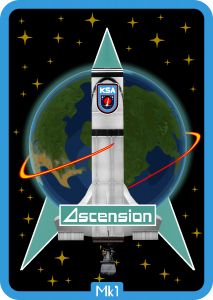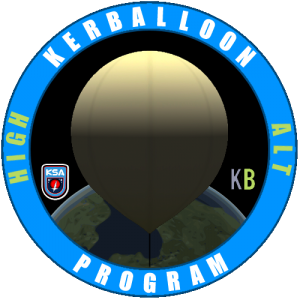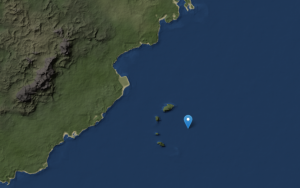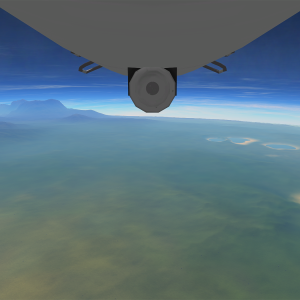 To continue to test science instruments the unkerbed Mk1-A capsule made its 4th flight up into space, adding data on to the studies began with a similar mission back in 2019. This time however the trajectory was tweaked to send the rocket higher and also carried Mystery Goo samples, the largest batch to date. Additional mission objectives included the technology demonstration of dish antenna for high-gain data transmission/reception and the capsule carrying internal shielding to help lower the amount of radiation that reaches the crew. The mission was scheduled to launch in the middle of the day cycle to ensure that the inner radiation belt was pushed closest to the surface by the kerbolar wind so the rocket’s trajectory would penetrate as deep as possible. No issues came up in the preparation for launch, the rocket was successfully rolled out to the pad and dish comms tested before being raised vertical for a wet dress rehearsal. The day of launch the rocket was lowered again for late onload of the Mystery Goo samples, as they are highly radioactive and would have presented a danger to pad crew during the rollout and WDR.
To continue to test science instruments the unkerbed Mk1-A capsule made its 4th flight up into space, adding data on to the studies began with a similar mission back in 2019. This time however the trajectory was tweaked to send the rocket higher and also carried Mystery Goo samples, the largest batch to date. Additional mission objectives included the technology demonstration of dish antenna for high-gain data transmission/reception and the capsule carrying internal shielding to help lower the amount of radiation that reaches the crew. The mission was scheduled to launch in the middle of the day cycle to ensure that the inner radiation belt was pushed closest to the surface by the kerbolar wind so the rocket’s trajectory would penetrate as deep as possible. No issues came up in the preparation for launch, the rocket was successfully rolled out to the pad and dish comms tested before being raised vertical for a wet dress rehearsal. The day of launch the rocket was lowered again for late onload of the Mystery Goo samples, as they are highly radioactive and would have presented a danger to pad crew during the rollout and WDR.
The Flight
Just prior to engine ignition in the new AFCS pre-launch procedure the fins all swiveled through their full range of motion to test hydraulic pressure – if they fail to re-center before ignition time of T-6s then pressure is low. Engine ignition was permitted and the K2-X fired up without issue at 10% initial thrust to check chamber pressure for 3 seconds before throttling up to launch TWR of 1.2 (~75% throttle). Launch thrust was confirmed at T-0, allowing the engine clamps to release and enable the rocket to begin its journey up into space at 17:30:00.74 local time. Another 3 seconds into the flight the rocket climbed above the service towers and the engine was brought up to full power, producing 172kN of thrust.













